#Harold Nicolson
Text

Vita Sackville-West, referring to Virginia Woolf, from a letter featured in Love Letters
#lit#vita sackville west#virginia woolf#letters#typography#writings#harold nicolson#quotes#selections#fragment#p
374 notes
·
View notes
Text
Interesting bit, quoted from Sally Bedell Smith’s recent Substack articles, Exclusive: The Secret Life of Tommy Lascelles, Part III: The Hidden Hand:
--speaking about when Harold Nicolson was writing the official biography of King George V--
“Nicolson and Lascelles met regularly—often over lunch at the Beefsteak Club in London. The private secretary kept tabs on progress and passed along suggestions from George VI, Queen Mary, and Queen Elizabeth. At one point Tommy counseled Harold that Queen Elizabeth was likely to ask him to cut anything that reflected well on the Labour Party, and that George VI would prefer that he not mention how badly George V treated his children.”
Bertie was always protecting his family...
#...even when they weren’t so nice to him. 😢#king george vi#loyal Bertie#sally bedell smith#tommy lascelles#Harold Nicolson#Bertie is the best#british royal family
11 notes
·
View notes
Text

Vita Sackville-West, Writer, 1916.
©E.O. Hoppé Estate Collection.
#writer#novelist#poet#orlando#virginia woolf#dorothy wellesley#harold nicolson#lgbt#queer#bisexual#lesbian#laurel wreath
15 notes
·
View notes
Photo
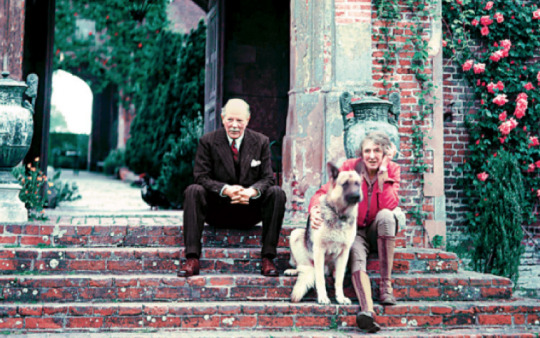
The true love that has survived is mine for you and yours for me.
- Vita Sackville-West to Harold Nicolson
The writer Vita Sackville-West always felt she belonged at her lavish ancestral home: Knole, in Kent. She was distraught that as a woman, she couldn't inherit it. When she married the diplomat Harold Nicolson, though, they found another historic place in the weald of Kent: Sissinghurst Castle, a magnificent collection of Tudor buildings and a sprawling farm, all of which had long been neglected.
When Harold Nicolson and Vita Sackville-West first saw Sissinghurst, it was a ruin. The sprawling farm in Kent had been for sale for two years, its moated Tudor buildings were mostly derelict and the garden was a rubbish dump. Their teenage son Nigel told them the property was ‘quite impossible’. Nonetheless, Vita went ahead and bought it in 1930 for £12,000. Built on the site of a medieval manor, it is known as Sissinghurst Castle although there is no castle - the name comes from the 18th century French prisoners of war, held there in cramped, smelly conditions, who sarcastically dubbed it ‘le chateau’.
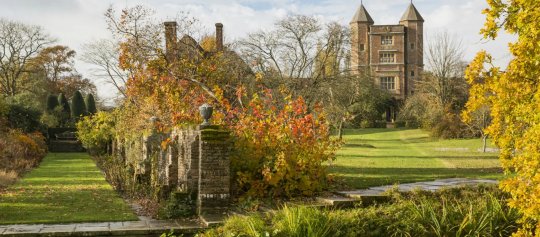
Vita, Harold and their sons spent their first night at Sissinghurst in one of the estate cottages, eating sardines and soup by candlelight. From these unpromising beginnings, Vita and Harold made Britain’s most revered garden. In the pantheon of British gardens, Sissinghurst is our equivalent of the Mona Lisa. Its extravagant loveliness and atmosphere of dreamy romance, as well as the famously unconventional love affair at the heart of its history, has made this a place which continues to fascinate. Vita and Harold transformed the grounds at Sissinghurst into the spectacular gardens which now attract thousands of visitors every year.
Vita and Harold formed a genuinely loving partnership and a marriage that lasted until Vita's death in 1962. Yet their letters and biographies reveal that both Vita and Harold had numerous same-sex relationships during their life together. On Vita’s part this included some very serious relationships - most famously, those with Violet Trefusis and Virginia Woolf. Their marriage was the foundation of their life together, offering both constancy and freedom for them both to pursue their same-sex desires and at the centre of which was Sissinghurst which was the bedrock of their marriage together.

The aristocratic Vita married Harold in 1913. They were a fashionable and popular couple - she a writer, he a diplomat - but although they were devoted to each other, they were both predominantly homosexual and had numerous affairs during their marriage. Vita, who dressed in pearls, a silk blouse, riding breeches and lace-up leather boots, was especially promiscuous. With Vita, it was not so much a matter of love triangles as love dodecahedrons. Vita pursued anyone who took her fancy at any given moment and several marriages were destroyed as a result.
One of the great dramas of the Nicolsons’ marriage was caused by her infatuation with Violet Trefusis, with whom she ‘eloped’ to France in 1920. Violet’s husband and Harold chartered a small plane and the two men set off together in pursuit of their wives, Harold eventually persuading Vita to return.
His love affairs were much more low-key than hers. In one biography, Nigel Nicolson commented that for his father, ‘sex was as incidental, and about as pleasurable, as a quick visit to a picture gallery between trains’.

What bound the couple together, even more than their sons, was their five-acre garden at Sissinghurst. Its creation was more than just an artistic endeavour. The energy and time they poured into it also afforded them the privacy they needed to conceal the nature of their marriage from the world.
Vita and Harold had made their first garden at their house, Long Barn near Sevenoaks, where they lived between 1915 and 1930. This was where they developed their style and made most of their horticultural mistakes; by the time they moved to Sissinghurst, they were confident gardeners and within their first two years Harold and Vita had cleared decades’ worth of weeds and brambles, laid new paths, restored buildings and excavated a lake.
They were very much hands-on gardeners and did most of the work themselves, not least because in the early years they weren’t very well off, living on Harold’s salary and Vita’s earnings as a writer. They agreed on a strict division of labour: Harold worked out the ground plan - still regarded today as a masterpiece of ingenuity and subtlety - but was allowed to plant just two of the garden’s many ‘outdoor rooms’.

Vita ruled supreme when it came to the rest of the planting. Most of the large plants, the shrubs and trees - and her beloved roses - were bought in from nurseries. As the garden filled out she would propagate plants from seeds and cuttings and eventually had grown enough plants to sell to the garden’s paying visitors. Her mantra when it came to planting was ‘cram, cram, cram every chink and cranny’, and she filled the garden until it overflowed with flowers, something which occasionally caused fierce disagreement. In a diary entry for 1946, Harold complains that whereas he wants plants which add shape and perspective, ‘she wishes just to jab in the things which she has left over’. Vita, of course, won the argument. ‘In the end we part, not as friends,’ he records grumpily.

Rather endearingly, though, Vita was keenly aware of the gaps in her knowledge and regretted not being a trained horticulturist. Late in life, when the garden was already internationally famous, she enrolled on one of the Royal Horticultural Society’s training courses, even though she herself was a member of the RHS’s governing council. Roses were Vita’s particular passion. In the post-war period, when neat, shrubby hybrid tea and floribunda roses were all the rage, she championed old-fashioned roses such as the opulent damasks, gallicas and centifolias. As much as their colour and scent, she loved them for their historical associations, writing: ‘To me they recall the brocades of ecclesiastic vestments, the glow of mosaics, the textures of Oriental carpets.’
The roses are still one of the great glories of Sissinghurst.

The most famous area, imitated by countless gardeners across the world, is the magnificent White Garden. It was only planted in 1950, perhaps conceived as a reaction to the years of wartime drabness, the khaki uniforms and blackout curtains. The odd thing is that the White Garden is not really all that white. Vita called it ‘my grey, green and white garden’ and the artfully chosen foliage sets off the white flowers so that, at certain times of day and in the right light, they appear to float in mid-air. The effect is like being in that delicious halfway state between dreaming and waking.
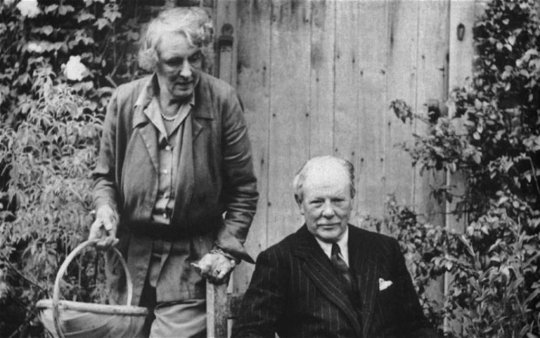
Vita died in 1962. Shortly before her death she wrote to Harold that ‘the true love that has survived is mine for you and yours for me’. After her death, visitors to the garden would sometimes see Harold sitting there, tears streaming down his cheeks as he remembered his wife. He died in 1968, a year after the garden was handed over to the National Trust.
#vita sackville-west#sackville-west#harold nicolson#nicolson#quote#relationships#marriage#aristocracy#nobility#english#gardens#nature#outdoors#sissinghurst#society#flowers#white garden#horticulture#english garden#gardening
110 notes
·
View notes
Text
the queer icons letter to her husband.

how iconic is this?!?!
been trying to get more into queer (especially lesbian) history lore.
the romance between Vita and Virginia has captured me, currently reading The Letters of Vita Sackville-West to Virginia Woolf
and lemme tell you, it's waking up my inner poet (not rly, coz there is literally nothing to wake up but you what I mean, poetry has just that effect sometimes)
also, Vita sackville-west is unrightfuly forgotten author, her story is SO packed.
like this for example:

what in the trans rights?!?!?!
3 notes
·
View notes
Text
Prompt 25: Is there a book in your native language you think everyone should read?
uhhh, well, my native language is english, so i'm afraid i don't have any wonderful language to represent. however, i definitely do still have books to recommend, and I think more people should read Portrait of a Marriage by Nigel Nicolson. it details the relationship of his parents, Vita Sackville-West and Harold Nicolson, and the ways in which it was unconventional. it painted a fascinating picture of a relationship that lasted because of the two's trust in each other, not what society dictates (then and now) to be the 'correct' way to have a relationship. as someone non-monogamous especially, it felt really wonderful to read about them
#readingwithlunlun#books#reading#alex had a single thought#portrait of a marriage#vita sackville west#harold nicolson#nigel nicolson#non monogamy
0 notes
Text

Vita Sackville-West, from a letter to Harold Nicolson dated 31 January 1956
1K notes
·
View notes
Note
Since youre antifascist, how about you give us a definition of fascism? What exactly makes someone a fascist? (and in case you use terms such as left-wing or right-wing be sure to define them too)
Guess it's been a while since a clever Anon challenged us to define fascism, huh? Right, let's get into it:
Via the United States Holocaust Memorial Museum:
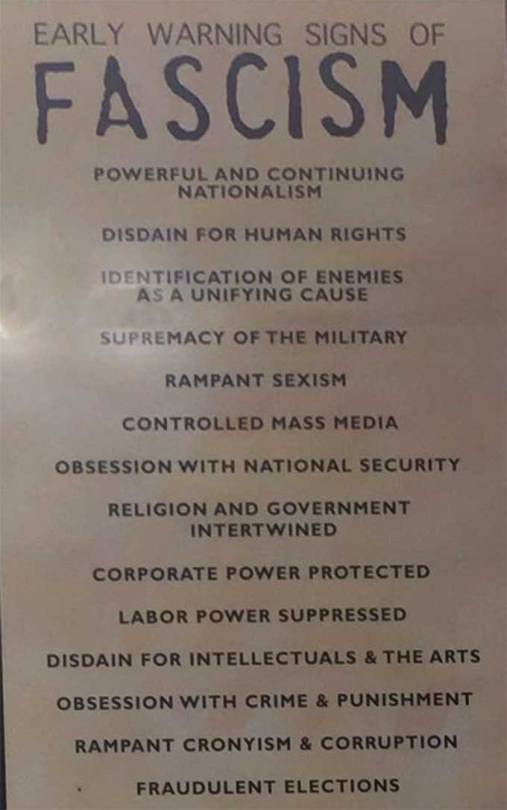
Yale professor Jason Stanley:

“Fascism is a creation of race hatred and its politically organized expression.” - Willhelm Reich, The Mass Psychology of Fascism (1933).
“Fascism is capitalism plus murder.” - Upton Sinclair
“Repression by brute force is always a confession of the inability to make use of the better weapons of the intellect — better because they alone give promise of final success. This is the fundamental error from which Fascism suffers and which will ultimately cause its downfall…that its foreign policy, based as it is on the avowed principle of force in international relations, cannot fail to give rise to an endless series of wars that must destroy all of modern civilization requires no further discussion. To maintain and further raise our present level of economic development, peace among nations must be assured. But they cannot live together in peace if the basic tenet of the ideology by which they are governed is the belief that one’s own nation can secure its place in the community of nations by force alone. ” - Ludwig von Mises, Liberalism: A Socio-Economic Exposition (1927).
“Spent most of the day reading fascisti leaflets. They certainly have turned the whole country into an army. From cradle to grave one is cast in the mould of fascismo and there can be no escape … It is certainly a socialist experiment in that it destroys individuality. It destroys liberty.” - Harold Nicolson, The Harold Nicolson Diaries : 1919-1964 (2004).
“The liberty of a democracy is not safe if the people tolerated the growth of private power to a point where it becomes stronger than the democratic state itself. That in its essence is fascism: ownership of government by an individual, by a group, or any controlling private power.” - Franklin D. Roosevelt
“A fascist is one whose lust for money or power is combined with such an intensity of intolerance toward those of other races, parties, classes, religions, cultures, regions or nations as to make him ruthless in his use of deceit or violence to attain his ends….If we define an American fascist as one who in case of conflict puts money and power ahead of human beings, then there are undoubtedly several million fascists in the United States.” - Henry A. Wallace
“Fascism is the cult of organised murder, invented by the arch-enemies of society. It tends to destroy civilization and revert man to his most barbarous state. Mussolini and Hitler might well be called the devils of an age, for they are playing hell with civilization.” - Marcus Garvey, Authors take Sides on the Spanish War, 1937
Philosophy Tube's breakdown of the elements of fascism is very thorough and recommended if you're not the reading type.
But do you read books? We hope so if you're looking to engage in political discussion about anything. Here are some books that tackle the definition of fascism, in whole or in part, that we would recommend to you (check/order from your local library!)
Mark Bray's highly-accessible Antifa: The Anti-Fascist Handbook is a great starting point for this topic.

Columbia history professor Robert O. Paxton's excellent book The Anatomy of Fascism goes into this in great detail.
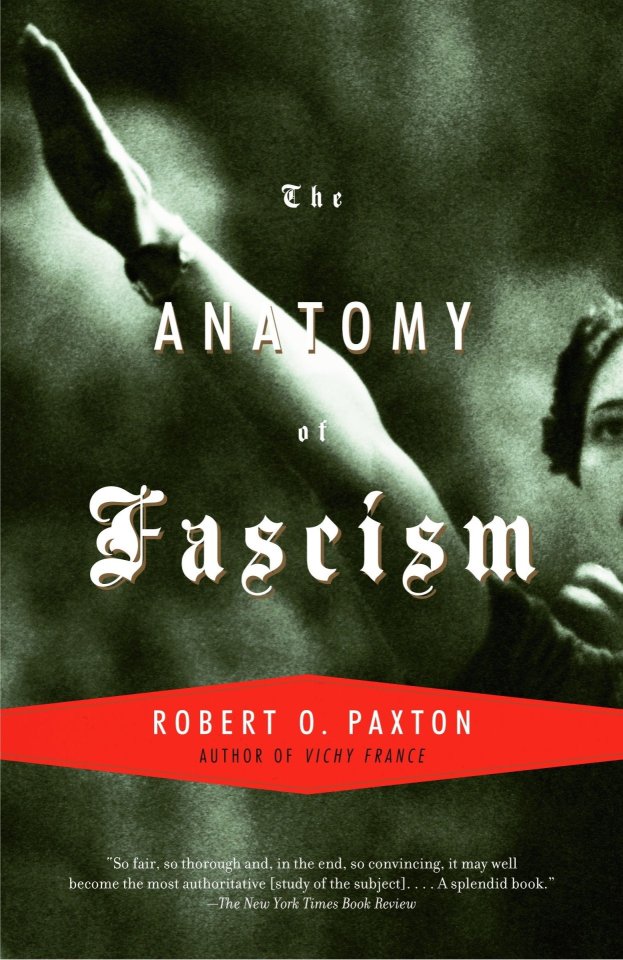
There's also Umberto Eco's The Eternal Fascist
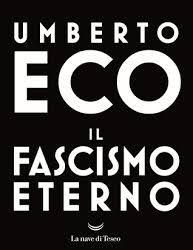
or his "practical list for identifying fascists"
as well as Hannah Arendt's seminal The Origins of Totalitarianism
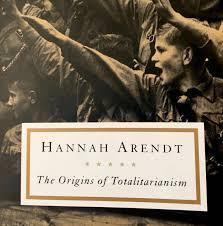
We hope you weren't looking for a simple answer to the complex question of "what is fascism?" Anon, just as we hope you're up to taking our challenge of checking out all of the above so you're curiosity is satisfied and you're well-versed on the topic.
648 notes
·
View notes
Text
how many phrases i shall make, —which will die like falling stars,
virginia woolf, in a letter to harold nicolson, 1927
2 notes
·
View notes
Text





Sissinghurst Castle near Sevenoaks, Kent, England (2) (3) (4) (5) by d0gwalker
Via Flickr:
(1) Oast houses
(2) (3) The twin-turreted Elizabethan tower sits within a large formal garden maintained by the National Trust. It was in this tower that the author Vita Sackville-West used to write.
(4) The gazebo was apparently where Harold Nicolson, husband of Vita Sackville-West, used to write.
(5) View of Sissinghurst Castle garden, taken from the top of the castle tower.
8 notes
·
View notes
Photo

Victoria Mary, Lady Nicolson, CH (née Sackville-West; 9 March 1892 – 2 June 1962), usually known as Vita Sackville-West, was an English author and garden designer.
Sackville-West was a successful novelist, poet and journalist, as well as a prolific letter writer and diarist. She published more than a dozen collections of poetry and 13 novels during her lifetime. She was twice awarded the Hawthornden Prize for Imaginative Literature: in 1927 for her pastoral epic, The Land, and in 1933 for her Collected Poems. She was the inspiration for the protagonist of Orlando: A Biography, by her famous friend and lover, Virginia Woolf.
She had a longstanding column in The Observer (1946–1961) and is remembered for the celebrated garden at Sissinghurst created with her husband, Sir Harold Nicolson.
#Vita Sackville-West#women in history#women in literature#XIX century#XX century#people#portrait#photo#photography#Black and White
33 notes
·
View notes
Text
From Virginia Woolf’s diary, November 23, 1926:
“Life is as I’ve said since I was ten, awfully interesting – if anything, quicker, keener at forty-four than twenty-four – more desperate I suppose, as the river shoots to Niagara – my new vision of death. ‘The one experience I shall never describe’ I said to Vita yesterday.”
Vita Sackville-West in a letter to husband Harold Nicolson, November 30, 1926:
“Darling, I know that Virginia will die, and it will be too awful. (I don’t mean here, over the weekend; but just die young.)”
*
“On 28 March 1941, Virginia left her last letter on the writing block in her garden lodge. It was a note to Leonard which thanked him for giving her ‘complete happiness […] from the very first day till now’. She then walked the half-mile to the River Ouse, filled her pockets with stones, and threw herself into the water.
Letter from Vita to Harold
Sissinghust Castle
31 March
“I’ve just had the most awful shock: Virginia has killed herself. It is not in the papers, but I got letters from Leonard and also from Vanessa telling me. It was last Friday. Leonard came home to find a note saying that she was going to commit suicide, and they think she had drowned herself as they found her stick floating on the river. He says she had not been well for the last few weeks and was terrified of going mad again. He says, ‘It was, I suppose, the strain of the war and finishing her book, and she could not rest or eat.’
“I simply can’t take it in. That lovely mind, that lovely spirit. And she seemed so well when I last saw her, and I had a jokey letter from her only a couple of weeks ago.”
*
“Virginia’s body was discovered on 18 April. She was cremated at Brighton on 21 April, with only Leonard present. Her ashes were buried under an elm tree at Monk’s House, with the penultimate words of The Waves as her epitaph: ‘Against you I will fling myself, unvanquished and unyielding, O Death!’
“As soon as Harold heard the news, he came down to Sissinghurst to be with Vita. Many years later she wrote, ‘I still think that I might have saved her if only I had been there and had known the state of mind she was getting into.’
Vita died from cancer on 2 June 1962. Her writing desk at Sissinghurst remains as she left it, decorated with two photos: one is of her husband, and the other is of Virginia.”
From Love Letters: Vita and Virginia
.
.
How did I not know, until now, that Woolf’s epitaph was from the closing of The Waves; it refers to the same Great Wave I once saw, in a vision, folding over everyone I love, the wave that Bernard proudly pitched himself against at the end of the novel, the same wave that forms in the mind before one can find words, when the pulse precedes semantic meaning. To read a life backward from a suicide—one finds clues everywhere: a sudden unspeakable vision of a rushing river, the lover-friend struck by the startling knowledge, she will die, and it will be too awful.
#literature#virginia woolf#death#water#oceanic feeling#river#rivers#vita sackville west#the waves#waters of oblivion#suicide
20 notes
·
View notes
Text
VITA SACKVILLE-WEST // AUTHOR
“She was an English author and garden designer. She was a successful novelist, poet and journalist, as well as a prolific letter writer and diarist. She published more than a dozen collections of poetry and 13 novels during her lifetime. She was twice awarded the Hawthornden Prize for Imaginative Literature. She was also the lover of Virginia Woolf, being the inspiration for Woolf’s book. Orlando. She is also remembered for the celebrated garden at Sissinghurst created with her husband, Sir Harold Nicolson.”


3 notes
·
View notes
Text
Kenneth Rose on John W. Wheeler-Bennett’s biography of King George VI
I have managed to read the whole 900 pages of John Wheeler-Bennett’s life of George VI. It is not as great a book as Harold Nicolson’s life of George V, either in style (which is often banal) or in content. There is not enough about the King himself, particularly his private life, and far too much about the politics and foreign affairs of his reign, much of which I found pretty stale stuff. I would like to have known more about who were the King’s personal friends; whether he ever read a book; what he liked to eat and drink. John Wheeler-Bennett is a friend of mine, and so I am glad I shall not be reviewing the book.
- Kenneth Rose in a letter to his parents, 21 September 1958
Dinner at the Beefsteak. As all had read Wheeler-Bennett’s life of George VI, the talk turned almost entirely on the book. The general opinion is that W.-B. is an admirable historian but a poor biographer - not really very interested in a man’s personal character. Arthur Mann,¹ who saw a lot of the King, said how sorry he was to find so few examples of the King’s rather dry wit. He gave us one story I had never heard. When showing Mann his collection of foreign orders and decorations at Windsor one day, the Queen picked up a German Cross, weighed it in her hand, and remarked how light it was. ‘Yes,’ replied the King, ‘they had to be - as they never took them off!’
- Kenneth Rose in a letter to his parents, 28 September 1958
- Who’s In, Who’s Out: The Journals of Kenneth Rose
---
1: Arthur Henry Mann (1876 – 1972) - British newspaper journalist
5 notes
·
View notes
Note
Do you prefer fiction or non fiction? Could recommend some of your faves?
I tend to read one of each at the same time, as sometimes I'm in a mood for one and not for the other.
I'll give one fiction rec I hope everyone tries: the short stories of Anton Chekhov. Short stories, not the plays. They are beyond the bend wonderful. Chekhov was such a keen viewer of human nature, and a deft hand at relaying it.
A non-fiction rec: Nigel Nicolson, Portrait of a Marriage. An intense recounting of the marriage of Vita Sackville-West and Harold Nicolson by their son.
6 notes
·
View notes
Photo



Worn on this day [October 1] in 1913 by Vita Sackville-West at her #wedding to Harold Nicolson at Knole, her family estate in Kent, UK. Reville & Rossiter made the "golden" gown of natural silk for the unconventional open marriage; Vita's many lovers included both of her bridesmaids.
6 notes
·
View notes